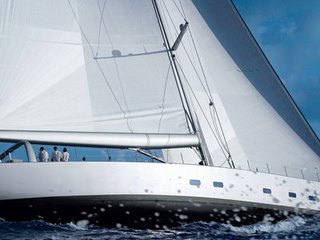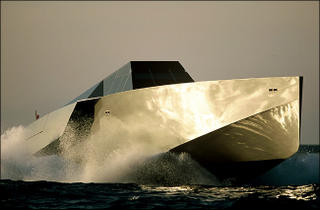
Ghost is a very challenging, radical and different yacht. It is not something direct in line with the previous projects of the yard. Ghost is a lightweight high performance yacht, all within a stylish minimalist concept. This minimalist concept adds another dimension to the construction and the development of the various components of the yacht.
The Luca Brenta & Co. design group from Milan developed the design for this the 122 ft. sloop. Hull and deck construction are made out of carbon fibre.
This yacht will be used as a family cruiser; therefore the owner has very high demands on comfort but everything needs in accordance with the overall concept and style. The deck layout as well interior will be totally in line with the concept of the yacht.
The hull is currently fitted out at the yard. The yacht will have a 2004 delivery.
T e c h n i c a l
Type of ship : Sailing Yacht - sloop
Design : Luca Brenta & Co. Yacht Design
Interior Designer : Luca Brenta & Co. Yacht Design
Classification : DNV HULL Certificate
Length over all : 37.2 m (122ft)
Length waterline : 32.8 m (108 ft)
Beam : 7.45 m (24ft)
Draught : 4.8 m (16ft)
Displacement lightship : 110 mt
Ballast : 50 mt
Hull/Superstructure : Carbon fiber pre-preg S.E. 84
Spar : Southern Spars infurling boom,
46.60 m (153 ft.) above maindeck
Engine : Caterpillar 3196 C
Power : 366 kW@2300rpm
Gearbox : ZF 350 V
Propeller : Amartech. 90 EHWS
Generator : 1 x ONAN MARINE 35MCGCA - 35 kW
1 x ONAN MARINE 22.5MDKAF - 22.5 kW
Bow-& sternthruster : Folding thruster - Hydrosta 60 kW

